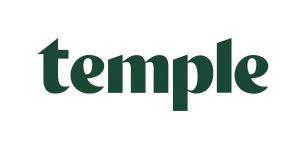2023 Awards Winner’s Spotlight: Best Practice Large-Scale Mitigation
Whitewool Stream Wetland Project
Meon Springs / Tetra Tech
This award was sponsored by:
In February 2021, Tetra Tech obtained planning permission for the first strategic wetland project in England designed to reduce nutrient impacts upon Habitats sites (in this case the Solent). The project, conceived by Meon Springs and Tetra Tech from an original aim of reducing nitrogen outputs, has developed into part of a whole business approach for the landowners, transforming an intensively farmed landscape into a productive, regenerating landscape to improve water quality and flows, whilst staying a productive farm.
The wetland has been designed for its headwater location and, using permaculture principles, it creates various environments and microenvironments to slow flows and remove nutrients from the water. Part of the area is wet woodland, where swales have been formed to develop an extensive “edge area” along which wetland plants planted to create diverse micro ecosystems. The main part has been developed by broadening what was a highly incised channel to a wide flat area, where the water can find multiple flow channels. This is known as taking the stream back to “Stage Zero”. In between the various wetlands are riparian buffers and trees which reconnect the previously severed stream corridors to the north and south of the site.
Through careful design the project will attenuate peak flows, reducing winter flooding downstream, reduce low flows in summer and deliver biodiversity net gain with c.6ha of wet woodland and other habitats.

Baseline ecological and hydrological surveys commenced in 2020 and the construction phase was completed in April 2022 with ongoing monitoring. The original concept was limited to a c.2ha area providing the targeted nutrient removal to enable development. This was expanded to deliver c.6ha of riparian woodland, grassland and other habitats. These habitats are not necessary for mitigation (i.e. removal of nutrients) and therefore represent significant biodiversity gains above and beyond the project requirement. Baseline habitats were of low distinctiveness comprising managed arable land. The created habitats in addition to the wetland itself comprise neutral grassland (medium distinctiveness) and wet woodland (high distinctiveness).
Although BNG was not requested at the time of the application, the LEMP uses Biodiversity Metric good condition criteria for created habitats as monitoring targets. Post-development monitoring has already shown a reduction in total nitrogen concentrations downstream of the wetland with target habitats successfully establishing and evidence of increased activity by target species so in addition to the quantitative gain in habitat creation, there are qualitative gains through improving ecological connectivity along the valley. The riparian woodland planting provides continuous cover between existing wooded and tree-lined reaches of Whitewool Stream through a previously open section of c.365m. Even in the relatively short time since the completion of the construction phase, there have been other key indicators of success with two pairs of lapwing breeding on site in 2022.
We will be posting further information on each of the 2023 Awards Winners over on our blog.

